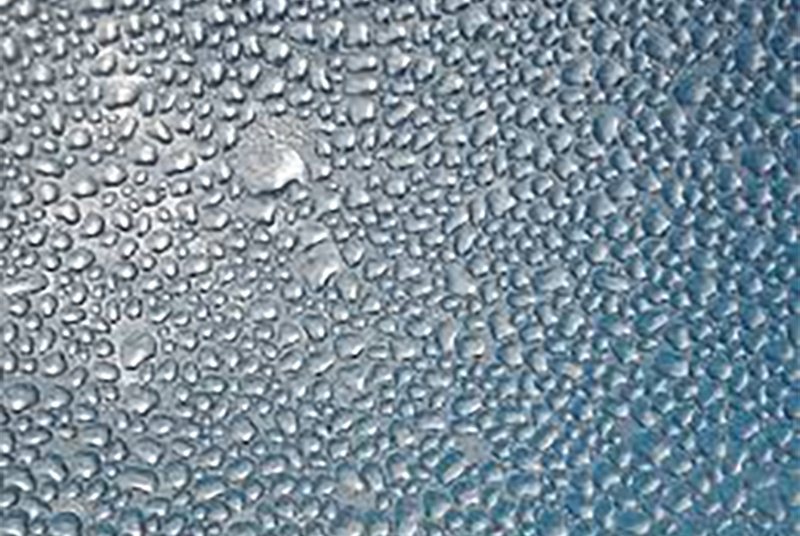As humidity rises, condensation often appears at the frames of walk-in freezers and floors. But why does this happen? Condensation forms when warm, moist air comes in contact with a colder surface, such as the “sweat” that forms on a cold can of soda on a hot summer day. When warm, moist air comes in contact with the cold surface of the can, the air is cooled, and the vapor from the air is then deposited on the can’s colder surface as liquid water. The same phenomenon can occur in walk-ins.
Condensation can form on the floor at the perimeter of a walk-in cooler or the frame of an insulated panel in a walk-in freezer due to the thermal conductive properties of a concrete floor. The dew point (a combination of humidity and air temperature) is the critical driver of these conditions. If there is no thermal break in the concrete floor where a walk-in cooler is installed, condensation can occur on the floor near the walls of the unit. Concrete is an even poorer insulator than wood, so it will cool to an even greater degree, and thereby create surface condensation. Even if a freezer has a thermal break in the concrete to prevent this from occurring, it can still happen under certain circumstances or if the thermal break was poorly designed or constructed.
While condensation can appear in walk-in coolers or freezers in high humidity conditions, it is preventable. Because air flow is crucial to preventing condensation, products should not be stored against the interior walls of a unit. A minimum 2” gap is required to allow for adequate air flow. Furthermore, the amount of moisture that is allowed to enter the unit should be limited. If the walk-in’s doors are opened for extended periods of time (not recommended), then strip curtains or air curtains should be used to limit air infiltration.
Learn more about KPS Global resources on our website or contact us with questions.



